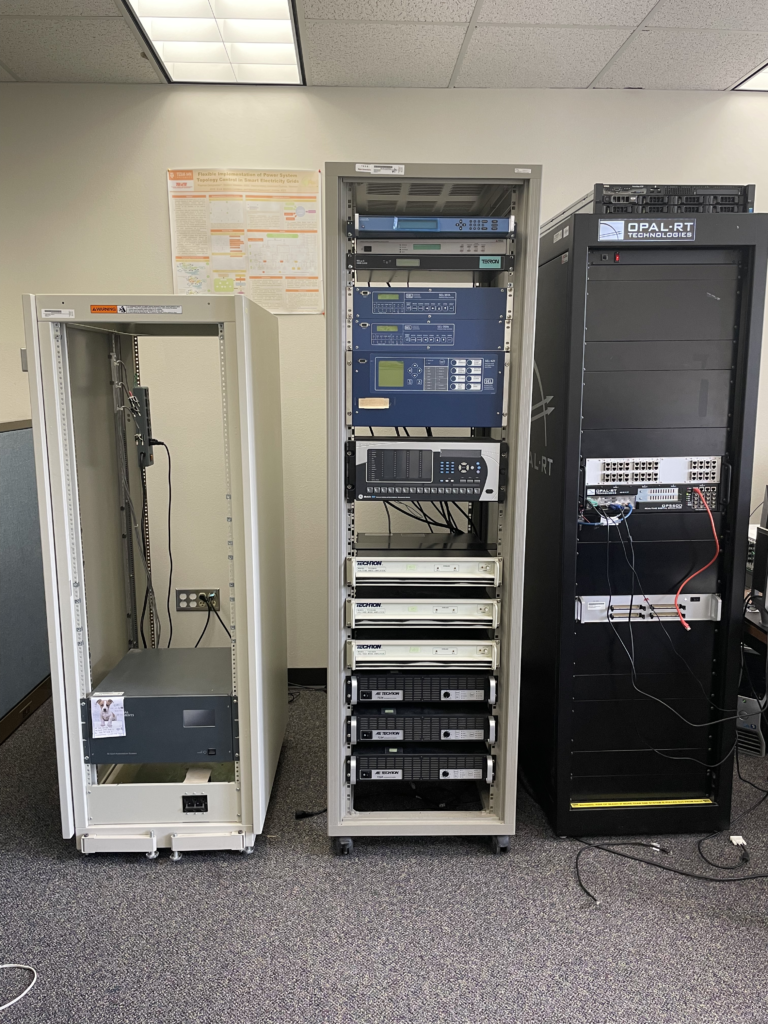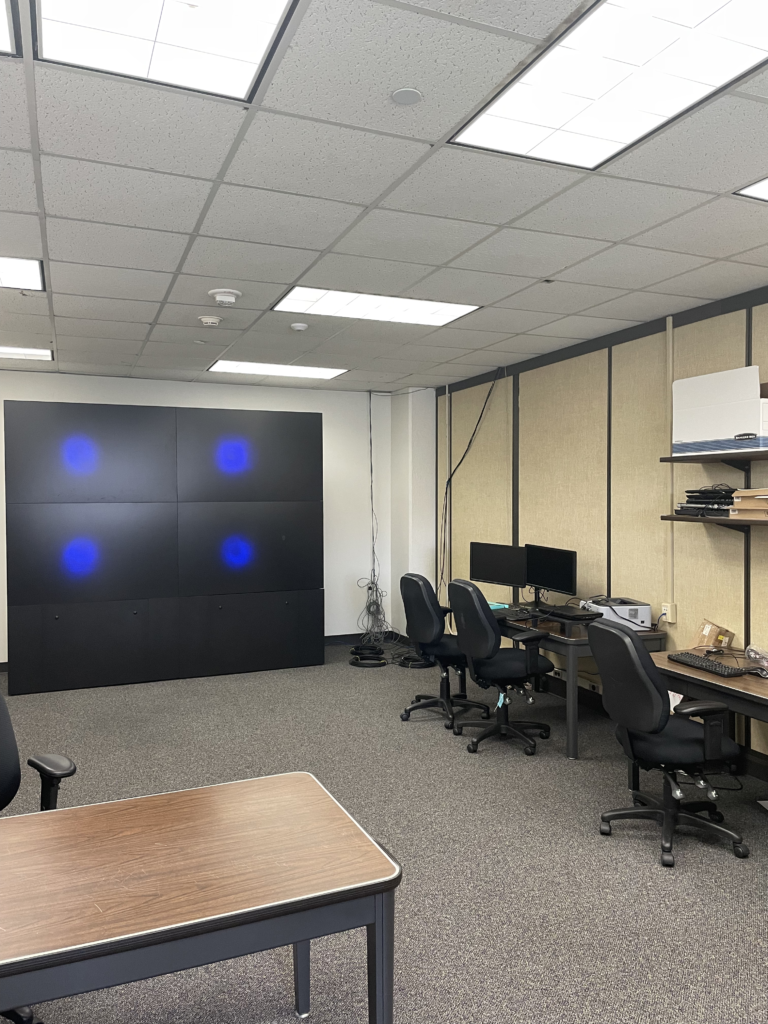There are two research labs located at Wisenbaker Engineering Building located at 188 Bizzell St., College Station, TX 77843.
WEB 145A
The lab contains three sets of synchrophasor measurement systems, each consisting of:
- A timing source (SEL-2488): receives Global Navigation Satellite System (GNSS) signals from an antenna and uses it to provide a synchronous IRIG-B signal to other devices in the lab.
- A phasor measurement unit (PMU) (SEL-487E): receives the synchronous time signal from the time source as well as voltage and current measurements from the field and uses it to compute voltage and current synchrophasors to monitor the power grid at a reporting rate of 30 frames per second (fps) or more.
- A phasor data concentrator (PDC) (SEL-3537): collects (concentrates) the data from PMUs and synchronizes them with a real-time timestamp then can send them to the control center.
In addition to this commercial substation setup, several devices were developed by our team:
- The Timing and GPS Signal (TAGS) module: contains its own GPS-disciplined low-drift-rate oscillator, which is used to continuously monitor the GPS signal it receives from the same antenna as the commercial timing source. If TAGS detects a timing intrusion, it goes into holdover mode to maintain a more accurate time and raises an alarm to the rest of the system.
- The Gold PMU: this PMU was developed to act as a reference for PMU measurements in the commercial system. It allows the user more flexibility in terms of changing measurement parameters and performing several PMU tests.
- The Field Test Set: provides the reference voltage and current waveforms that mimic those received from current and voltage transformers in the field. The field test set was programmed to include the design and application tests that can be used to evaluate and calibrate PMUs according to the IEEE standard C37.118.
- The Rack Mount Server (RMS): A communication system was set up to help integrate information from these various systems. Data flowing between devices is captured using Electronic Test Access Points (ETAPs) and sent to the RMS where it is stored and used for analysis. The RMS can detect and raise alarms to differences between C37.118 synchrophasor packets, IEEE 1588 Precision Time Protocol (PTP) packets, and the reported time coming from the reference system and the system under test.
WEB 323I
This lab contains three important devices:

- Typhoon-HIL Real-Time Simulator: This real-time simulator can be applied to ultra-high-fidelity Controller-Hardware-in-the-Loop (C-HIL) simulation for power electronics, microgrids, and distribution networks for testing solutions. It also offers a unique user experience free of third-party software and hardware complexities with specific processors and ultra-robust numerical solver to the Schematic Editor, SCADA system, and TyphoonTest testing automation. More details can be found at: https://www.typhoon-hil.com
- OPAL-RT: This real-time simulator is used for the development of PC/FPGA-based real-time simulators, Hardware-in-the-Loop (HIL) testing equipment, and Rapid Control Prototyping (RCP) systems to design, test, and optimize control and protection systems used in power grids, power electronics, and various industries. It also provides researchers with accessible, real-time simulation technology to accelerate the development of better products and more reliable energy transmission. More details can be found at: https://www.opal-rt.com
- Mitsubishi large-scale LED screen: The Mitsubishi large-scale LED screen consists of 4 video cubes connected to the main controlling hub. Researchers use the screen for presentations and demonstrations of their work. The large size allows for depicting comprehensive diagrams and graphs in every detail. The controlling hub can remotely connect to the computer in the lab, providing a seamless transition from workstations to the presentation room. More details can be found at: https://www.mitsubishielectric.com

